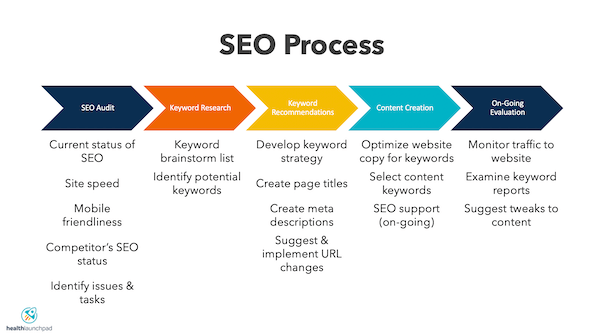I have been involved in digital marketing since the mid-90s. SEO and in particular the relationship between content and SEO has always fascinated me.
Lately, I have learned the hard way why frequency and consistency are so important. In this post, I will share some first-hand experiences about why these are critical to your SEO strategy and to building organic traffic.
Why Sailing Taught Me Everything I Know About Content and SEO

As I recounted in this post, I am a passionate sailor and have been for over thirty years. Back in the mid-2000s, I had very little opportunity to sail. I was landlocked and it was bumming me out.
At that time, I was an executive at a major digital marketing agency. Social media was emerging as the next big thing. I needed to become an expert in this new medium in my work for a digital marketing agency.
And so, I saw an opportunity to kill two birds with one stone by starting a blog on sailing.
I figured that doing this would raise my knowledge of social media, content, and SEO AND scratch my sailing itch at least vicariously.
And boy did it!
Although I had a slow start, over the course of five years, my blog, Messing About In Sailboats, became one of the top sailing blogs.
In fact, for several years, if you entered ‘Sailing Websites” into Google, this blog was the top-ranked website.
At one point, my dopey little sailing blog was getting 15,000 unique visitors per month. Now was that due to brilliant, insightful writing? Nope!
It was the frequency of my posting. I posted at least three times per week. These posts were a mix of original articles, photos that were sent to me, videos, and guest posts. It was hard work but it was fun and very rewarding.
I did not realize it at the time but I was executing best practices in content and SEO. Google’s algorithms liked the frequency and focus of my content and ranked me highly as a result.
Eating My Own Dog Food From Day 1 With healthlaunchpad
At past agencies, we would often complain that we were the shoemaker’s children as we did do a poor job of marketing ourselves. When I started healthlaunchpad, I was determined to build a sustainable marketing engine that would generate new clients. Content and SEO have been at the center of this strategy since day 1.
I launched healthlaunchpad on March 5th, 2020 at 12:00 pm CST. HIMSS annual global conference was canceled within one minute of announcing my launch on LinkedIn due to the pandemic.
This was a major blow. My plans had been to get new clients by networking like a demon at HIMSS. Within a minute of launching the business, my plans were shot.
I had to focus on other activities that would help me get new clients. In particular, accelerating my content and SEO strategy.
My goal was to build my credibility as an authority in healthcare technology marketing. I have over 25 years of experience in marketing and 7 years of experience running a health tech firm I founded in 2012, While I had good credentials, I actually had very few connections in my newly chosen field of health tech marketing.
So how to do it?
Content and SEO were the cornerstones of this game plan.
My Content and SEO Game Plan
In the first nine months of the business, I was pretty disciplined about blogging every week. By the end of 2020, I was creating reasonably good content but, I was not seeing much website traffic. It was also clear that my SEO needed work.
At the end of 2020, I was fortunate to meet the awesome Karen Finn, who runs her own SEO agency. I hired Karen to help me.
I have been so pleased with her work that I have engaged her to help me with several clients.
In this video interview with Karen, she goes into her approach in detail.
The basic approach outlined below is to assess how well (or poorly in my case) my site was optimized for search; develop a list of relevant, high volume, and less competitive keywords; then create a content calendar that optimized for these keywords.
And then go create a boat-load of content.
You see! It all comes back to sailing.

Results? Blown Away!
I had high expectations but even I have been amazed by the results. Karen and I created a detailed Content and SEO plan in early 2021 and within a few months, I saw traffic double to my website. Here is what else resulted from my work with Karen:
- Organic traffic increased 10x over 12 months.
- The coolest thing was that SEO became the biggest driver of traffic to my website accounting for 55-65% of my traffic.
- Three of my better blog posts are the number one, two, three, or four landing pages on my website. More people come to my website via a blog post than come to my home page directly. This means that people who don’t know me are finding me.
Digging Deeper
Recently, Karen and I analyzed the SEO data in more detail. This chart tells an interesting story but it takes some explaining.

- In green, are the numbers of blog posts that were published by month over the last 12 months. Just shy of 90 posts in a year.
- In blue is organic traffic (i.e. driven by content and SEO). I have removed the Y-axes as the numbers are proprietary and are not needed to tell the story. In January 2021, organic search traffic accounted for 25% of healthlaunchpad’s website traffic. One year later, 60% of the website traffic is organic, much of that driven by content.
- The orange line is the number of keywords associated with the website. This used the same scale as the blue line. This means that Google is spidering https://healthlaunchpad.com/ and attributing hundreds of keywords to my site.
- The gray line represents the keywords that are driving traffic to the website. This is a much smaller number than the number of keywords associated with the website. (This is plotted on its own smaller-scale axis). Roughly 5-10% of the keywords associated with my site actually drive traffic.
So what?
- Well firstly and maybe not surprisingly, the three key attributes (organic traffic, keywords associated with the website, keywords driving traffic) are closely correlated, i.e. having lots of keywords associated with the site leads to more keywords driving traffic and this leads to more traffic. It goes without saying that the keywords have to be relevant.
- The more I posted, the better this strategy worked. Why? Well, more content on the website, means that Google associates more keywords with my website, and per #1, that leads to more organic traffic as long as the content and SEO are relevant to the audience.
- There is a lag between new content and organic traffic increase. From what I can tell the lag is about 2-3 months. So it takes about 90-days to start seeing results from posting multiple well-optimized and relevant posts.
- Frequency Works! The rewarding thing is that when I post more content, I see more traffic. It might take a few months but it has been paying off.
- Consistency Matters! When I slacked off for a month or two, traffic declined a month or two later. Google wants fresh meat! I learned the hard way, that I cannot rest on my laurels. I have to keep posting and I do.
Conclusion – Creating an Effective Content and SEO Game Plan
Anyone who has worked with me knows that I am very passionate about Content and SEO. Sticking to a consistent, high-frequency posting strategy is daunting for most marketers. I hope that this post will give you some confidence that it will pay off.
The key things to figure out are:
- Determine what keywords you should focus on: They have to be relevant to what you do and what’s on your website. They also have to be search terms that have high enough volume and are not so competitive that you could never rank for them.
- Plan what content you should write: Again it has to be relevant and compelling. You should put together a detailed plan that includes keywords, subject lines, and topics. Try to plan out at least 20 posts. My plan is currently 90 posts long.
- Post frequently: In my view, you should post a minimum of once per week, and ideally twice per week.
- Be consistent: If you take one thing away from this, that when I slacked off, I paid for it 90-days later. You have to stick at it!
- Measure what matters: Have a simple SEO dashboard that tracks how many posts you have published per month (ideally including word count), track the number of keywords associated with the website by month, the number of keywords driving traffic, and last but not least, monthly organic traffic.I also track the percentage of traffic that is organic vs not-organic. And last but not least, pay close attention to which pages get the most traffic, especially which pages are the first page visited (i.e. landing pages). If the most visited pages are blog posts and not your home page, your content and SEO strategy are working.
I hope you found this helpful. If you need help, gimme a holler. Karen and I will jump on a call.
*******************
Other Interesting Topics:
- Making SEO a Culture In Healthcare Marketing
- Content & SEO – Positioning Frequency
- Healthcare SEO Marketing Strategy
- 10 Reasons Why Content Marketing Is Important In Healthcare Marketing
- Effective Communication for Brand Marketing Optimization
- How to Turn Your Customers Into Headline Creators
Originally posted on LinkedIn.
